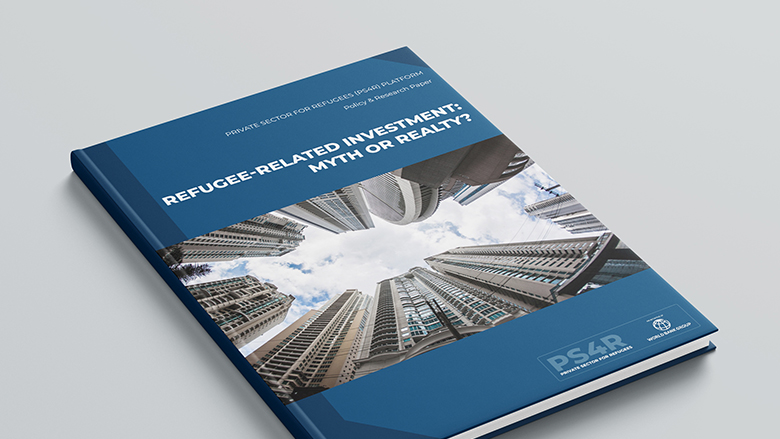Real Returns and Real Challenges 
Refugee-related investments have much opportunity for growth and can be of great mutual benefit to both refugees and local communities. The business case for investing in refugee-related companies or projects is gradually becoming visible in several world regions and contexts, from East Africa to Europe.
This paper takes stock of the current state of the space, highlights notable challenges being faced and derives some recommendations to guide future efforts in evolving the field of refugee-related investing.
OVERVIEW
As of mid-2022, an estimated 103 million people were forcibly displaced worldwide, of which 32.5 million refugees, 53.1 million internally displaced persons, and 4.9 million asylum seekers. Unfortunately, a confluence of increasing global conflict and instability, natural resource scarcity, and climate shocks indicate an increasing and accelerating trend in the coming decades. The World Bank estimates that by 2050, up to 216 million people could become internally displaced, while according to the UN climate migrants may reach one billion. The prognosis for forced displacement in the coming decades ranges from daunting to dire.
While humanitarian aid can be an effective model for addressing forced displacement challenges in the short-term, sustainable, and long-term solutions to refugees’ economic inclusion are sorely needed. Utilizing refugee-related investment - a specific subset of impact investing that takes a commercial, profit-driven approach to investing in companies that have a refugee focus - the international community and private actors can leverage the current financial system and ongoing socio-economic development efforts to improve the lives, livelihoods, and well-being of refugees and their host communities through the much-need provision of formal work opportunities, goods, and services.
Attention to refugee-related investment is emerging in recent years. Despite a lack of purely commercial players who invest in accordance with profit-oriented principles, those who are actively and intentionally investing in the refugee space seem to have at least some degree of concessionality in their approach. At the same time, a wide spectrum of stakeholders and organizational models are exploring different investment strategies to support migrants and refugees. Taking initiative to innovate and take risks, firms are employing modalities that mix concessional and hard financing to varying degrees to try and prove models that are both effective and can be scaled up to address future challenges. In this context, some players are making headway establishing funds with innovative structures, risk management techniques, and monitoring and evaluation systems, while others are patiently building out the pipeline of refugee firms so that they can be viable for venture capital (VC) investment in the medium term.
However, the refugee-related investment space still faces a myriad challenges and obstacles. While roadblocks abound, this paper highlights four broad challenges, in particular: (i) a lack of deep or developed pipelines makes investment unclear; (ii) a few commercial investors are actively building investment products supporting refugees, accompanied by a nascent business case surrounding refugees; (iii) a lack of investor-level data, fund data sharing, and best practices that are part of a healthy investment ecosystem; (iv) political and regulatory hurdles, as well as massive idiosyncratic differences between hosting contexts.
In comparison to several years ago, the field is showing hopeful progress that could be increased by development support for refugee-related investors. As some initial grant-reliant refugee-related investment models are moving away from pure concessionality towards pure profit-driven principles, the international community can help providing tailwind by improving the dynamism in the ecosystem through support programs such as accelerators and mentorship initiatives to help refugee-led and refugee-serving companies in their early stages, as well as research initiatives to help in filling lingering data gaps. When willingness is aligned on both sides, deft and mutually respectful partnerships between commercial players and development actors can be a relatively low-cost initial engagement with a potential to build longer-term investment product development partnerships. In this respect, increased grants and concessional financing are needed to prove effective models in the refugee investment space, and then to crowd-in increasingly commercial financing moving models away from concessionality, and closer to commerciality.